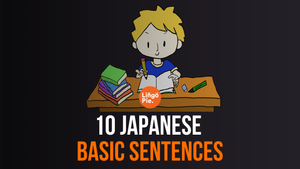Thinking about learning Japanese?
When I got the news that I'd been chosen as a company ambassador for a three-month tour in Japan, excitement quickly gave way to panic. While my colleagues buried their noses in Japanese language books, I found myself drawn to a different teacher: Studio Ghibli.
These animated films became my window into Japanese culture, teaching me not just phrases but the very essence of Japanese life. As I watched movie after movie, I fell in love with these seemingly insignificant yet incredible creatures. Next thing I knew...I was watching mainly because of them!
So in this post, I'll tell you about the 10 best Studio Ghibli creatures that every fan should know. If you're planning a trip to Japan or just want to learn more about Ghibli movies, these creatures will make you curious and maybe even want to learn Japanese.
20 Iconic Anime Quotes In Japanese With Their Meanings
12 Kids Animes that will make you Master Japanese
Pokémon names and their meanings in Japanese

Iconic Studio Ghibli Creatures
Studio Ghibli has made many amazing movies over the years. These films are loved by people all over the world for their beautiful art, touching stories, and unforgettable characters. Some of the most famous Ghibli movies include "My Neighbor Totoro," "Spirited Away," and "Princess Mononoke" - each with its own set of creatures!
Now, let's meet 10 of the best Studio Ghibli creatures.

Calcifer from Howl's Moving Castle
Calcifer is a fire demon who lives in Howl's castle. He looks like a small, lively flame with big eyes and a mouth. Calcifer is funny and likes to complain, but he's also very powerful. He keeps the castle moving and provides heat for cooking.
In Japan, there's an idea that spirits can live in anything, even fire. These spirits are called "kami" and can be found in nature. Calcifer is like a modern, funny version of these fire spirits. He shows how old Japanese ideas can be part of new stories.
Kodama from Princess Mononoke
Kodama are small, white forest spirits that appear in "Princess Mononoke". They look like little ghostly figures with big, round heads that can turn and rattle. Their bodies are see-through, and they often appear and disappear quickly. Basically, they live in the trees of the old forests and are a sign that the forest is healthy and full of life.
In old Japanese stories, Kodama are spirits that live in trees. People believed that cutting down a tree with a Kodama could bring bad luck. This shows how important nature is in Japanese culture.

Jiji from Kiki's Delivery Service
Jiji is a small black cat who is Kiki's best friend in "Kiki's Delivery Service". He's not just a regular cat - Jiji can talk! He has big eyes and a tiny pink nose, and he's always by Kiki's side. Jiji is smart, a bit sarcastic, and often says what Kiki is really thinking.
While Jiji isn't based on any specific Japanese folklore, talking animals are common in many Japanese stories. In old tales, animals often have magical powers or can speak to humans. Jiji is a modern take on this idea.
Catbus (Nekobasu) from My Neighbor Totoro
The Catbus, or "Nekobasu" in Japanese, is one of the most fun and strange creatures in "My Neighbor Totoro". It's exactly what it sounds like - a big cat that's also a bus! The Catbus has a huge grin with lots of teeth, big glowing eyes, and a furry orange body with stripes like a tabby cat. Its legs are like a cat's, but they can stretch really long to run fast.
In Japanese culture, there are many stories about animals that can change shape or have magical powers. These are called "yokai". While the Catbus isn't a traditional yokai, it fits with this idea of magical animals in Japanese stories.

Kaonashi (No-Face) from Spirited Away
Kaonashi, which means "No-Face" in English, is a mysterious spirit from the movie "Spirited Away". He looks like a tall, black figure wearing a white mask. The mask has two small eyes and a little mouth, but no other features. Kaonashi can change his size and shape, sometimes becoming very big or very small.
In Japanese culture, masks are very important. They're used in traditional theater and festivals. Kaonashi's mask might remind Japanese viewers of these traditions. But unlike traditional masks that show clear emotions, Kaonashi's mask is always the same, making him hard to understand.
Baron Humbert von Gikkingen from Whisper of the Heart
In "Whisper of the Heart", the Baron is just a beautiful statue in an antique shop. He inspires the main character, Shizuku, to write a story. But in "The Cat Returns", we see the Baron come to life and have adventures. He's brave, kind, and always ready to help others.
The Baron's full name, Humbert von Gikkingen, sounds very fancy and European. This fits with his gentlemanly appearance and manners. In Japan, characters with foreign-sounding names often seem mysterious and exciting.

Soot Sprites (Susuwatari) from My Neighbor Totoro and Spirited Away
The name "Susuwatari" comes from two Japanese words: "susu" meaning soot, and "watari" meaning to cross over. So their name basically means "moving soot". In English, they're sometimes called "dust bunnies" too.
Soot Sprites are based on real Japanese folklore. In old stories, there are spirits called "Makkuro Kurosuke" (pitch-black blackies) that live in dark, dusty places. Hayao Miyazaki, who made these movies, turned this old idea into the cute Soot Sprites we see in his films.
One fun thing about Soot Sprites is that they like to eat konpeito, which are little star-shaped candies. In "Spirited Away", the boiler man Kamaji gives them these treats. This shows how even tiny spirits need to be respected and cared for.
Ponyo from Ponyo
Ponyo is a magical fish-girl who stars in the Ghibli movie named after her. At first, she looks like a little red fish with a human face. But when she decides she wants to become human, she grows arms, legs, and a full head of wild red hair. As a human girl, Ponyo is cute, energetic, and very curious about the world above the sea.
In Japanese folklore, there are many stories about animals or sea creatures that can turn into humans. These are called "henge" or shapeshifters. Ponyo is like a modern, kid-friendly version of these magical beings.
Totoro from My Neighbor Totoro
Totoro is the big, fluffy star of "My Neighbor Totoro". He looks like a giant, gray, owl-like creature with a big round tummy and a wide smile. Totoro is very tall and can be as big as a tree, but he can also shrink down to a smaller size. He has long claws, pointy ears, and whiskers that make him look part cat, part owl, and part bear.
In Japan, Totoro has become a cultural icon. You can find Totoro toys, clothes, and even themed cafes. Many people see Totoro as a symbol of childhood innocence and the importance of nature.

Teto (Fox Squirrel) from Nausicaä of the Valley of the Wind
Teto is a small, cute creature that appears in "Nausicaä of the Valley of the Wind". He looks like a mix between a fox and a squirrel, with soft fur, big ears, and a fluffy tail. Teto has white and light brown fur, with darker stripes on his back and tail. He's about the size of a regular squirrel but has sharper teeth like a little fox.
Even though "Nausicaä of the Valley of the Wind" was made before Studio Ghibli was officially formed, Teto became one of the earliest beloved animal companions in Hayao Miyazaki's works. He set the stage for many other cute and loyal animal friends in later Ghibli movies.
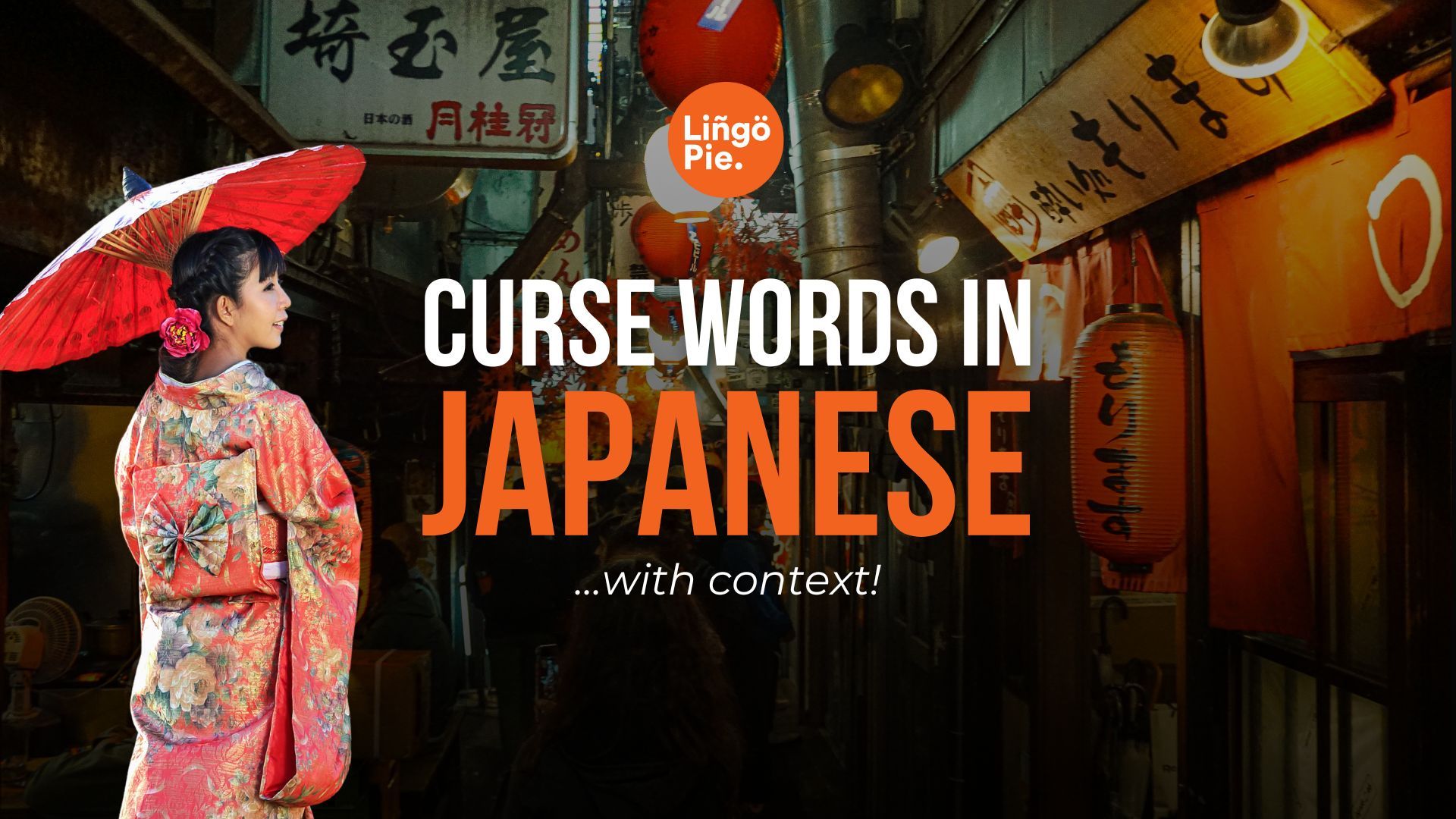
How To Learn With Studio Ghibli Movies
Whether you're planning a trip to Japan or just want to understand more about Japanese culture, Ghibli movies can be a great teacher. These movies are full of beautiful scenes, interesting characters, and stories that can teach us a lot.
In this section, I'll lay out a basic guideline on how to use these films to learn Japanese:
- Watch the movies with subtitles in your language first. This helps you understand the story and get used to hearing Japanese.
- After you're familiar with the story, try watching again and listen for Japanese words you hear a lot. Words like "arigatou" (thank you) or "konnichiwa" (hello) are easy to spot and remember. Write these words down and practice saying them.
- Pay attention to how characters behave. You'll see lots of bowing, ways of eating, and how people talk to each other. These show real Japanese customs. For example, in "Spirited Away", you can learn about Japanese bathhouses and how to be polite when entering someone's home.
- Many Ghibli movies use ideas from old Japanese stories. The spirits in "Spirited Away" or the forest creatures in "Princess Mononoke" come from Japanese beliefs. Learning about these can help you understand Japanese culture better.
- If something in a Japanese movie interests you, use it as a starting point to learn more. For example, if you like the food in "Ponyo", you could learn about Japanese cooking. If you enjoy the countryside in "My Neighbor Totoro", you could read about Japanese rural life.
Remember, learning should be fun! Don't worry about understanding everything at once. Just enjoy the movies and let yourself be curious about the Japanese world they show.
For more information on how to learn Japanese with Studio Ghibli movies, read our expert guide below 👇
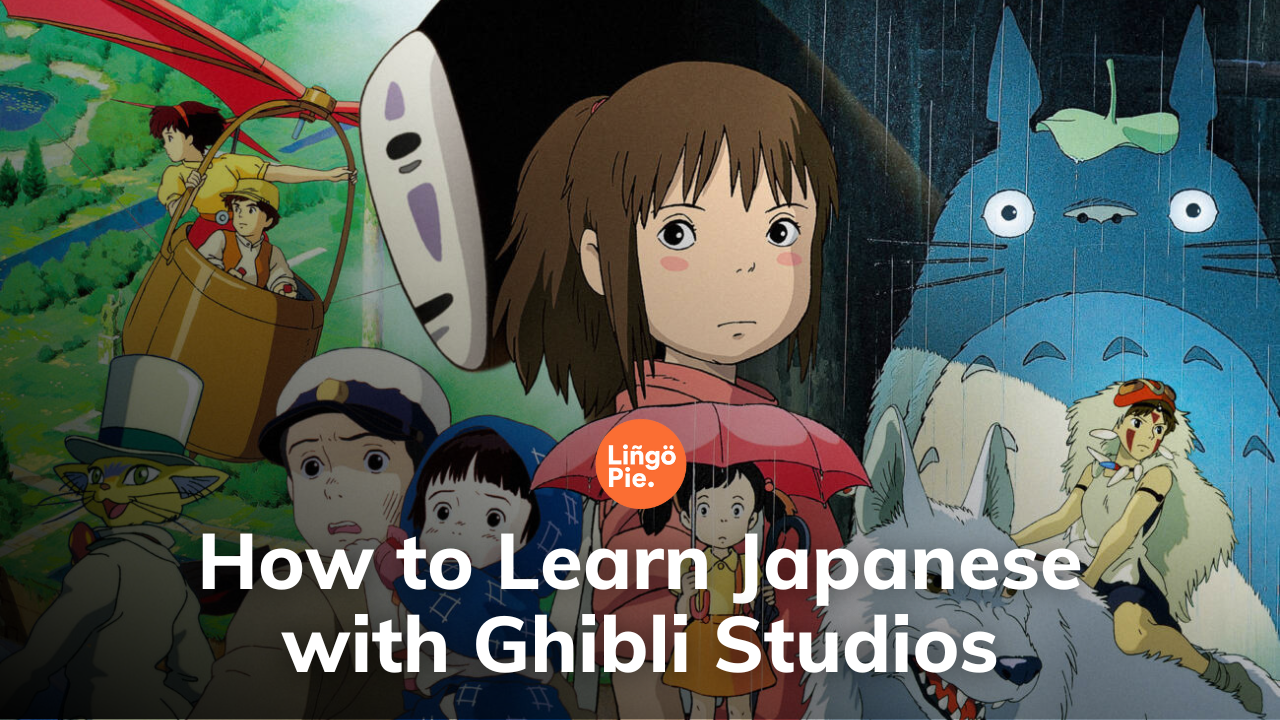
Japanese Phrases From Studio Ghibli Films
If you've watched at least one of the Ghibli films before, then you'll know that the dialogues are rich with expressions and vocabulary that you can hear on the streets of Japan. Here’s a handy table of common phrases from various Ghibli movies, along with their meanings and the context in which they're used.
| Japanese Phrase | English Translation |
|---|---|
| ありがとう (Arigatou) | Thank you |
| すみません (Sumimasen) | Excuse me / I'm sorry |
| おはよう (Ohayou) | Good morning |
| そうですか (Sou desu ka?) | Is that so? / Really? |
| 大丈夫 (Daijoubu) | Are you okay? / I'm fine |
| 行こう (Ikou) | Let's go |
| 頑張って (Ganbatte) | Do your best / Good luck |
| さようなら (Sayounara) | Goodbye |
| いただきます (Itadakimasu) | Let's eat / Thank you for the meal |
| 美味しい (Oishii) | Delicious |
| 助けて (Tasukete) | Help me |
| 分かりました (Wakarimashita) | I understand / Understood |
| 静かに (Shizuka ni) | Quietly / Be quiet |
| またね (Mata ne) | See you later |
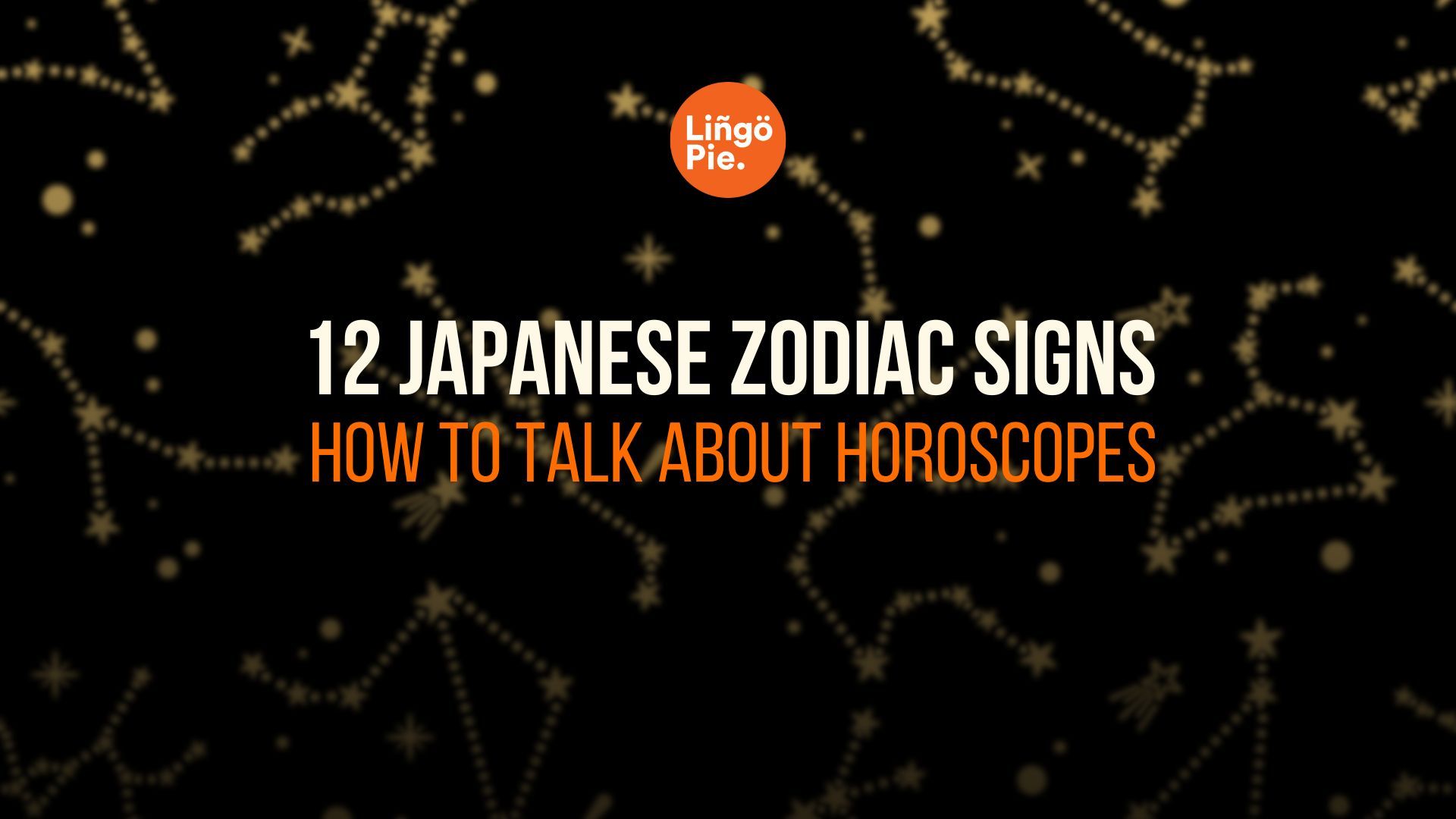
Japanese Quotes From Studio Ghibli Films
Whether it’s a line about love, courage, or finding your path, these films have a magical way of speaking to our hearts. Here are some standout quotes from the world of Ghibli:
- "No matter how many weapons you have, no matter how great your technology might be, the world cannot live without love." - Castle in the Sky
- "The Earth speaks to all of us, and if we listen, we can understand." - Castle in the Sky
- "You cannot alter your fate. However, you can rise to meet it." - Princess Mononoke
- "Life is suffering. It is hard. The world is cursed. But still, you find reasons to keep on living." - Princess Mononoke
- "Try laughing. Then whatever scares you will go away." - My Neighbor Totoro
- "Just follow your heart and keep smiling." - Kiki's Delivery Service
- "Whenever someone creates something with all of their heart, then that creation is given a soul." - The Cat Returns
Learn Japanese With Lingopie
So you see, there's so much more to Studio Ghibli films than just being a selection for your movie night! It's actually a sneaky good way to pick up Japanese. These movies are packed with everyday language and cool cultural insights that make learning feel less like homework and more like you're exploring a new world.
If you’re really looking to boost your Japanese skills, check out Lingopie's features. It’s like Netflix but for language learning, blending real-world language use with all the binge-worthy fun of your favorite shows and movies. So why not give it a shot? You might just find yourself chatting away in Japanese sooner than you think!


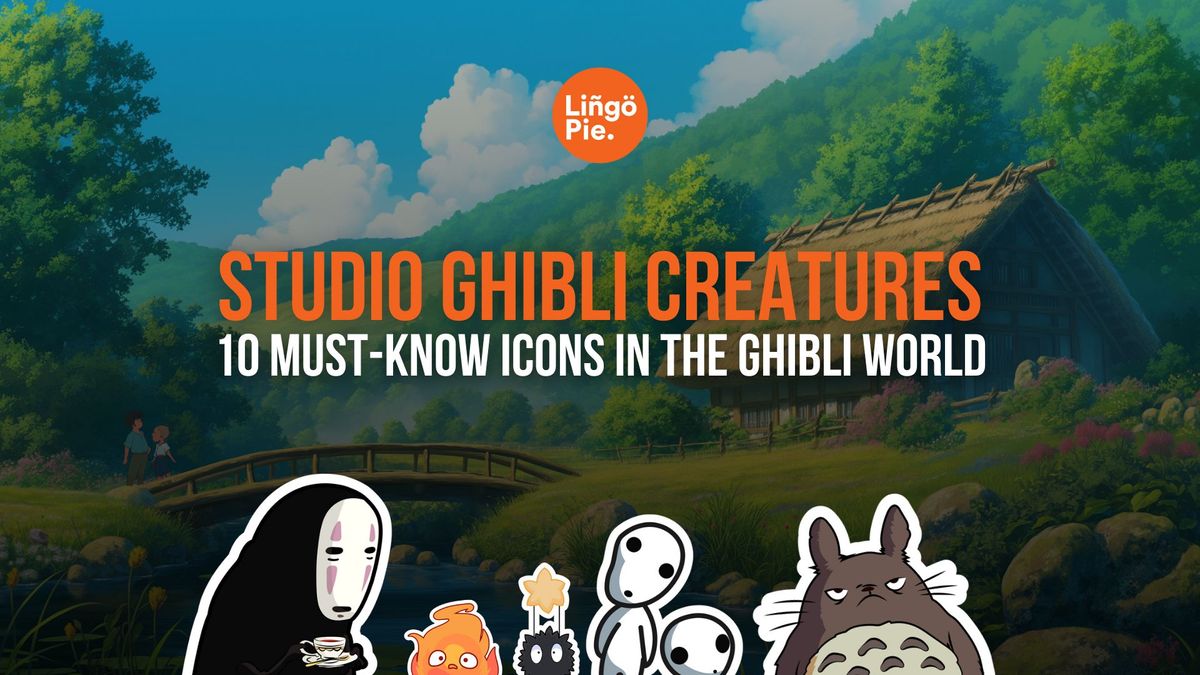



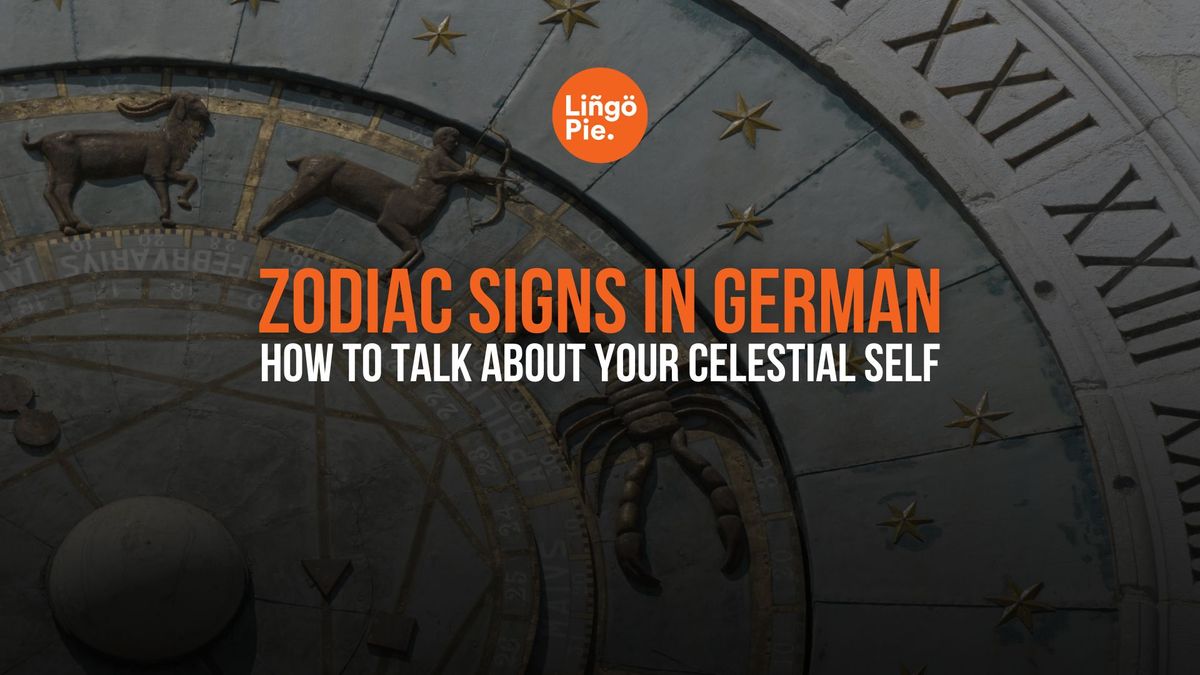
![How To Use Mo (も) Particle In Japanese Grammar [Guide]](/blog/content/images/size/w300/2025/06/How-To-Use-Mo-----Particle-In-Japanese-Grammar.jpg)

